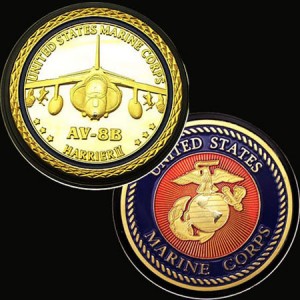Military Coins: A Tradition Adopted by Civilians
 The camaraderie of a group increases in direct proportion to the risks that the members face together. Esprit de corps is forged in a deed well-done. With public service comes pride-pride in the group’s accomplishments and the way the sum of the parts is greater than the whole. Bonding in dangerous situations has long accompanied the military.
The camaraderie of a group increases in direct proportion to the risks that the members face together. Esprit de corps is forged in a deed well-done. With public service comes pride-pride in the group’s accomplishments and the way the sum of the parts is greater than the whole. Bonding in dangerous situations has long accompanied the military.
Military coins, or challenge coins, are small coins minted especially for distribution among a select group who have served together. They bear the insignia, emblem, or other identifying marks of their group. The first military coins were inspired by military service, as evidenced by their designs.
The challenge coin derived its name from a game played by United States soldiers while in Germany during World War II called a pfennig check. A pfennig is the German equivalent of the US penny. When a bar patron called for a pfennig check, the last person to produce a pfennig had to buy a round of drinks for the house.
Challenge coins must be carried at all times by the owner. If a coin-owner is challenged, at any time, to produce the coin and they cannot, they must pay the price. That includes time in the shower or in the bathroom. Of course, this is a good-natured competition meant to entertain the members of the group. The penalty is rarely more than buying drinks for those who can show their coin or perhaps some type of servitude for the betterment of the group (or the embarrassment of the loser).
The first challenge coins were allegedly minted of bronze for members of a United States Air Force squadron during World War II. A member of the squadron, who carried his coin in a small bag around his neck, was shot down and captured by German troops. He managed to escape while being moved to a prisoner of war camp. He was captured again, this time by a French patrol, which was lucky for him. However, the area in which he was found was known for traitors and spies. He was wearing civilian clothing when captured and had no identification. Unable to convince his captors that he was an American, the French prepared to execute him. He convinced them to halt the execution when he showed them his challenge coin with the US insignia on it.

Pingback: The Uses of Modern Challenge Coins | Challenge Coins Direct